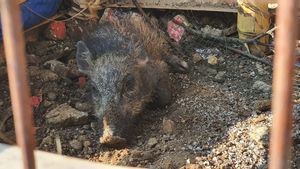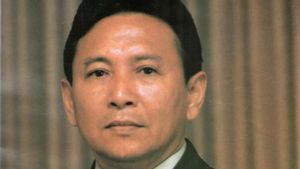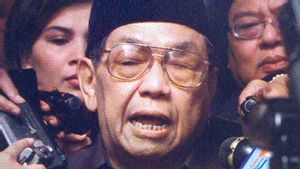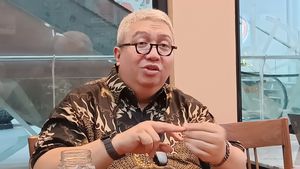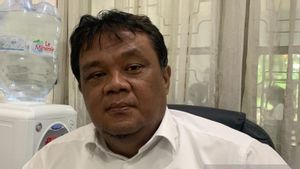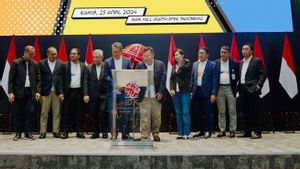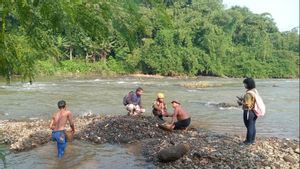
JAKARTA - The proclamation of the independence of the Republic of Indonesia is the moment we have been waiting for. All rejoice that Indonesia is free from colonialism. But not for the Dutch colonialists. The Windmill Country still claims Indonesia as its territory. The option of terror began to be launched by the Netherlands. The Dutch Military Aggression I became the main strategy.
But the Netherlands went too far. The Rawagede massacre between Karawang-Bekasi, for example. A human tragedy that claimed hundreds of lives. The world also criticized the Netherlands. In the eyes of the Dutch, the proclamation of Indonesian independence had no value. Indonesia, which was formerly the Dutch East Indies, is still considered a colony.
A colony that was squeezed like a 'cash cow'. It was said that because the Dutch considered that their territory was only taken by the Japanese, not by the natives. Therefore, the Dutch felt they had the right to control Indonesia. Once again. The Dutch intended to overthrow Indonesia and return it to the status of a colony. The provocations were carried out by the Dutch before the negotiations.
The Dutch crackdown did not make the courage of the freedom fighters shrink. The support of all Indonesian people to defend independence echoed everywhere. All the people fought in one command. As much as possible for once independent, remain independent. In addition, the Netherlands is planning to carry out negotiations.
But the results of the negotiations were not very satisfactory for both parties: the Netherlands or Indonesia. The Netherlands is furious. They chose to launch a massive attack designed to destroy the Republic of Indonesia. The attack is forever remembered as the First Dutch Military Aggression in 1947.
“In general, the Netherlands rationalized their decision to use military force on the grounds that the Republican government did not adequately control the extremist elements scattered within the territory of the Republic and thus hindered the implementation of the Lingarjati Agreement that had been made. Even though the Republic has not been able to thoroughly oversee all areas of non-permanent armed organizations, surveillance continues to be increased.”

“When the Netherlands launched its aggression, the scope and effectiveness of the Republic's control over its own territory was much greater than before. The discipline and integration of armed organizations are also greater than before. It is ironic that in order to effectively contain the Dutch aggression, the Republican military organization was deployed and the command of the armed units needed to be given autonomous power again," said George McTurnan Kahin in the book Nationalism & Indonesian Revolution (2013).
The Dutch carried out the aggression in full force. The weapons used are complete. The Dutch also equipped their troops with tanks and air troops that were quite strong. It is not impossible that in just two weeks, the Dutch had taken control of almost all major cities that produce food – in West Java and East Java. After that, most of the military bases belonging to Indonesia fell into the hands of the Dutch Netherlands.
That is, in a short time the Netherlands was able to achieve the goal of geographically dominating Indonesia. The Dutch with their war fleet believed that the conquest of other cities was only a matter of time. But one that the Dutch could barely achieve at that time. The Dutch failed to destroy the Indonesian National Army (TNI).
"The capital city of Indonesia is under siege and international relations are difficult because the ports are controlled by the Dutch. The Indonesian economy also experienced difficulties because the Indonesian region which was a rice producer fell into the hands of the Dutch. But in their attempt to destroy the TNI, the Dutch failed.”
“The TNI in the First War of Independence practiced a linear defense system (maintaining a line of defense) which turned out to be ineffective, so that the TNI was expelled from the cities. However, the TNI did not experience destruction, and then survived in the villages,” said G. Moedjanto in the book Indonesia Abad Ke-20 Jilid 2 (Indonesia in 20th Century Volume 2, ed), 1989.
Rawagede Massacre

The echoes of the TNI troops entering the villages finally reached the ears of the Dutch. During the ceasefire after the First Military Aggression, the Dutch began to suspect that the Republican troops had used many villages as guerrilla bases. Rawagede Village (West Java), is one of them.
This village is considered famous by the Dutch – from the village head to the residents – for supporting the struggle to expel the Dutch. The whole of Rawagede which is located on the Karawang-Bekasi border is also mentioned by the Dutch as pro-Republican agents.
The Dutch often launched offensive operations to crush freedom fighters, who they called extremists in Rawagede. The main target is Captain Lukas Kustarjo. He who was dubbed the Dutch as the 'Begundal Karawang' was valued at up to 10 thousand guilders. Life or death. Thanks to the people's help, Luka Kustarjo is always safe. As a result, the Dutch always failed to crush the freedom fighters.
"According to Dutch records, the troops of Lukas Kustarjo, a former PETA Buntaco (non-commissioned officer), held a fierce resistance against the Dutch army. It should be noted that the Japanese NCO candidates were taken from the ordinary population, different from the group of residents who were taken as PETA officers from the former civil service groups of the Dutch colonial government.”
"This is because it affects the difference in character between non-commissioned officers and PETA officers in the Siliwangi Division. The PETA non-commissioned group, according to their origin, were more enthusiastic about fighting the Dutch than the Javanese feudal sons who were made officers by the Japanese," wrote Hario Kecik in the book Pemikiran Militer 2: Sepanjang Masa Bangsa Indonesia (Military Thought 2: Throughout the Time of the Indonesian Nation, ed), 2009.
Failure is not just when attacking. Every time they spy on the activities of the Republican fighters in Rawagede, Dutch spies is always found. The angry Dutch then tried to fight back. No kidding, the Dutch sent a large army. The 9th battalion of Dutch soldiers from the Infantry Regiment led by Major Wijman was involved in searching for Lukas Kustarjo.

On December 9, 1947, the troops were deployed. Rawagede village was immediately surrounded. They searched every house. The residents of Rawagede were then gathered into small groups of 30-40 people.
One by one, the residents of Rawagede were asked while they were being held at gunpoint by the Dutch soldiers. None of the residents who were questioned gave any information about the whereabouts of Lukas Kustrarjo and other fighters. They said they didn't know. There are also those who choose silence.
In the middle of the rain, the furious Dutch immediately asked all the adult men in Rawagede to form a small group. They are separated from their children or wives. They were given orders to squat with their backs to the Dutch soldiers. The massacre began. The sound of guns was heard one after another. Shortly after, the cries of mothers who lost their husbands, children, and relatives broke out in the rain.
Those who tried to escape by jumping and hiding in the river were also massacred by the Dutch. Without mercy, Rawagede made a flood of blood. The tragedy claimed the lives of 431 people. However, the Dutch dodged.
According to a memorandum of excesses from the Netherlands, only 150 people died. No more. Even so, the Dutch atrocities were immediately condemned by the world. In fact, the UN Security Council in 1948, called the Dutch action a deliberate and cruel act.
“However, because the patrols of the Dutch troops used sniffer dogs, their whereabouts were finally discovered. Every clump of water hyacinth in the river was then bombarded with bullets. As a result, in an instant, the corpses were strewn about."
"Screams of pain were heard everywhere. This actually resulted in a barrage of bullets that became more and more blind. At the same time, the small river which was the drainage channel, the water immediately turned red with blood," concluded Her Suganda in the book Rengasdengklok: Revolusi dan Peristiwa (Rengasdengklok: Revolution and Events, ed), 2009.
*Read other information about the DUTCH COLONIAL PERIOD or read other interesting articles from Detha Arya Tifada.
Other MEMORY
SEE ALSO:
The English, Chinese, Japanese, Arabic, and French versions are automatically generated by the AI. So there may still be inaccuracies in translating, please always see Indonesian as our main language. (system supported by DigitalSiber.id)



